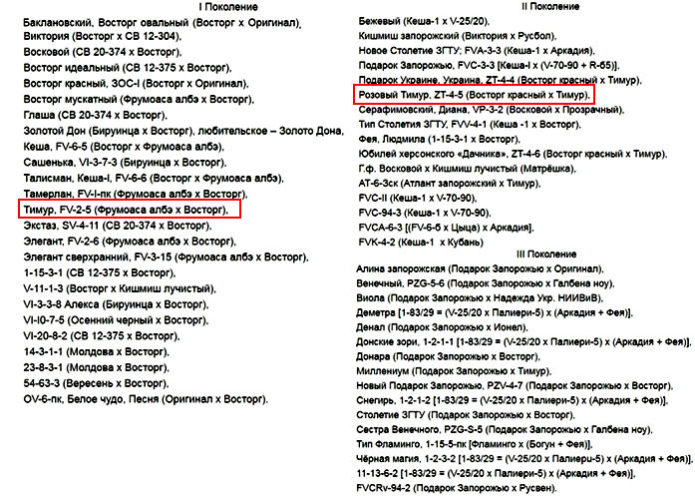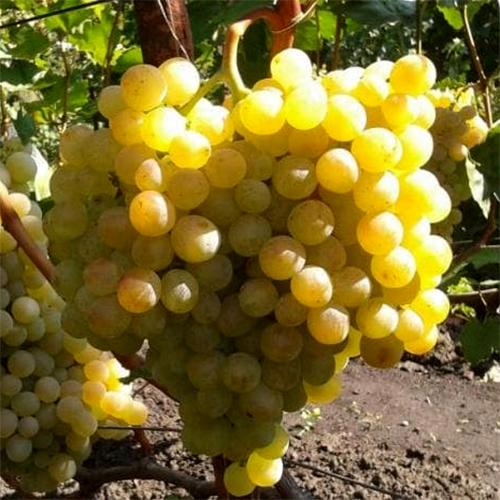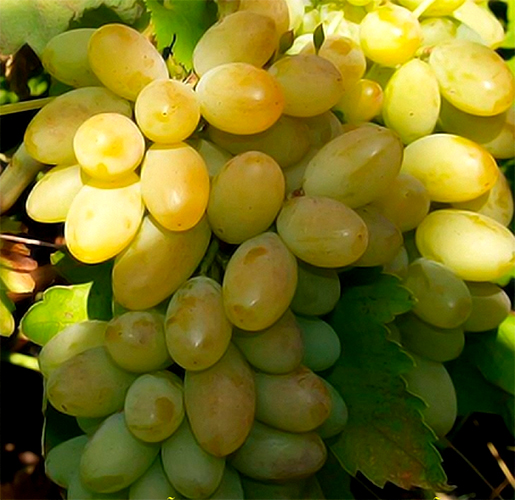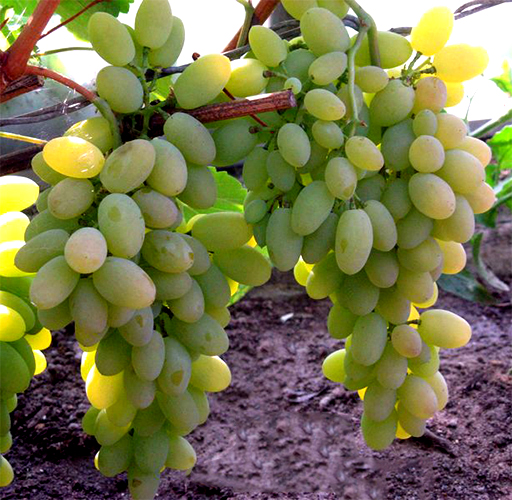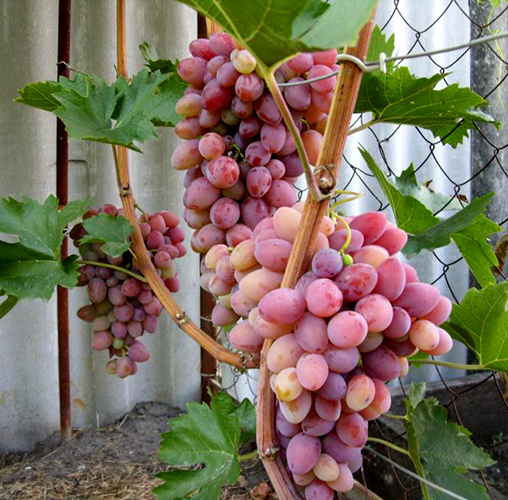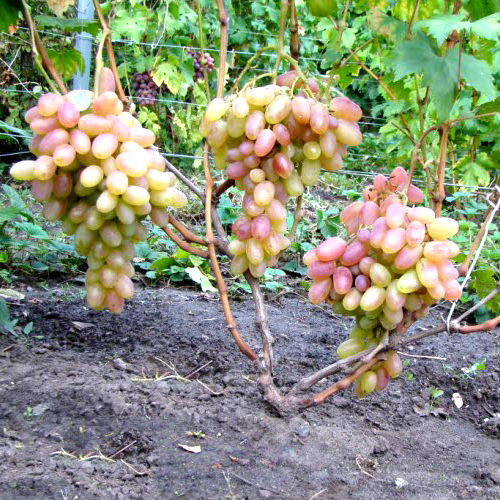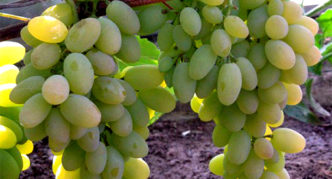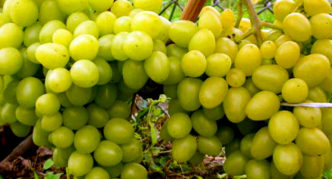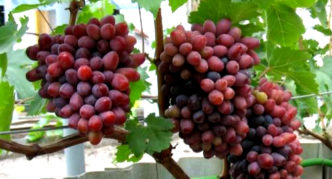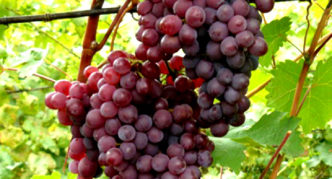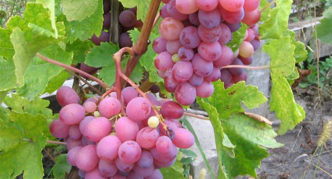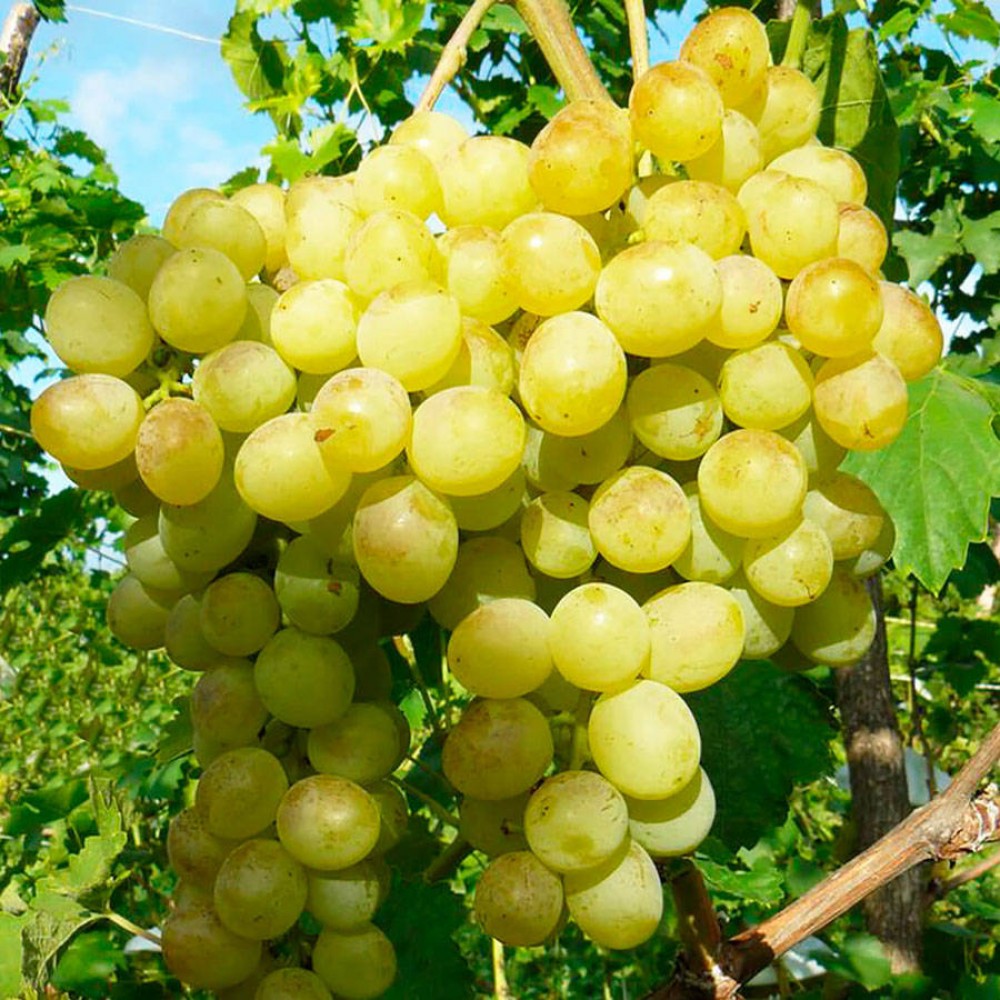The progenitor of the Timur and Timur pink grapes was the famous Delight variety, bred about fifty years ago by complex selection at the Research Institute of Viticulture and Winemaking of the RSFSR (now VNIIViV named after Yakov Ivanovich Potapenko).
Content
Grape Timur and his "son"
The institute was faced with the task of creating grape varieties that could grow without shelter in regions with colder climates than was traditional in the forties of the last century. To date, VNIIViV has created 21 varieties of its own selection and more than fifty have been tested and registered in the register of the State Commission of the Russian Federation for Testing and Protection of Breeding Achievements (FSBI "State Breeding Commission"). In the middle of the last century, the institute bred the Delight grape. This plant tolerates frosts down to -25 ° C. Using this grape in breeding, scientists have bred many varieties with the same or even greater winter hardiness. Now there are already three generations of varieties, for the breeding of which Rapture and its derivatives were used.
Timur - white table grapes - the first generation of the Rapture family. To create it, we used the varieties Delight and Frumoasa alba (translated as white beauty) of Moldovan selection.
Delight:
- ripens in 90-110 days, counting from bud break;
- winter hardiness -25 ° С;
- clusters weigh 700 g or more;
- berries generally weigh five to six grams.
Frumoasa alba:
- ripens in 115–125 days;
- winter hardiness -25 ° С;
- bunches - 350-550 g;
- berries - 5-6 g.
Timur inherited both advantages and some disadvantages from his parents.
Advantages:
- ripens in 105-113 days;
- winter hardiness -25 ° С;
- bisexual flowers (self-pollinating);
- excellent compatibility with rootstocks;
- entry into fruiting in the second year;
- heavy bunch - 400-600 g;
- large berries - up to 8 g;
- resistance to fungal diseases.
Video about Timur grapes
Disadvantages:
- the need to accumulate perennial wood so that the bunches become largest;
- exactingness to feeding;
- pronounced dependence of the taste of berries on the composition of the soil;
- the tendency to overload the crop.
The full formation of the bush takes 4–5 years. Only during this period Timur can accumulate enough perennial wood so that bunches from 600 to 1500 ripen on his vines. On heavy soils, the skin of Timur grapes has a herbaceous smell and tart taste, which completely disappear after the berries ripen.
Pink Timur - this hybrid form was bred in "OV" Grape Elite "(Zaporozhye) - the third generation of the Rapture family. To create it, two grape varieties from the first generation of Vostorgov were used - Timur and Red Rapture. The main characteristics of the Timur variety were described a little earlier, and in the Delight grapes they are red, as follows:
- ripens in 130 days;
- winter hardiness -25 ° С;
- bunches - 600-900 g;
- berries - 6-7 g.
There is some vagueness in the description of the grape variety Timur pink. This is due to the fact that the variety is new and is still being tested. Therefore, its characteristics are indicated, based on these indicators in parents and already gained experience.
The main characteristics of the Pink Timur:
- ripens in 110-130 days;
- winter hardiness -25 ° С;
- bunches - 800 g;
- berries - 7-10 g.
It is already definitely known that Timur pink inherited the following advantages from his parents:
- bisexual flowers (self-pollinating);
- excellent compatibility with rootstocks;
- resistance to fungal and putrefactive diseases;
- entry into fruiting in the second year.
Video about grapes Pink Timur
The disadvantages of this grape are the same as those of Timur:
- the need to accumulate perennial wood so that the bunches become largest;
- exactingness to feeding;
- pronounced dependence of the taste of berries on the composition of the soil;
- the tendency to overload the crop.
Growing grapes Timur and Pink Timur
Seedlings of both of these varieties, like any other grape, are placed in a sunny place, protected from the winds. For Timur (undersized bush) the distance between plants in a row is 1.5–2 m, and between rows 2–2.5 m. For Pink Timur (a medium-sized bush) between bushes is 2–2.5 m and row spacing is 2.5–3 m. Caring for them is no different from what you need to do when growing grapes of any kind:
- watering;
- feed;
- spray against pests and diseases;
- conduct green operations;
- tie up the shoots of the current year;
- form a bush by pruning after leaf fall.
It is the pruning of Rapture's offspring that can be difficult. With their great vigor, these plants give many shoots, which leads to an overload of the crop. For Timurs, it is preferable to choose pruning, which will enable the bushes to accumulate old wood. To do this, when shaping a grape bush, Timur and Pink Timur do not leave replacement knots on the main vine, but only shorten it. The main vine in viticulture is called a branch or sleeve. This year's vines are cut very shortly in the fall. 3-4 buds are left on them, from which fruiting vines will grow next year. Such knots should be at regular intervals on one side of the old vine. Their number is calculated so that a total of 30 to 40 kidneys remain. This type of pruning is called a short cut. If they want to get larger brushes, then leave so many knots so that they have 20-25 buds. Most often, growers call these buds eyes.
Timur-like table varieties
You can compare grape varieties by their main characteristics. If you arrange them in the table, then you can immediately see the advantages or disadvantages of each of them for one or another position. They choose grapes for their garden plot based on climatic conditions and personal preferences.
Compare Timur
| Variety name (dining room) | Winter hardiness | Ripening period (days) | The weight | Muscat flavor | Disease resistance | |
| bunches (d) | berries (d) | |||||
| Timur | -25 ° C | 105–113 | 400–600 | up to 8 | there is | high |
| Rusven | -25-27 ° C | 110–115 | 350–550 | 5–6 | eat + sage | high |
| friendship | down to -23 ° С | 110–115 | 280 | 4 | there is | average |
| Arcadia | up to - 21 ° С | 115–125 | 500–700 | 7–8 | there is | average |
Grape varieties indicated in the table
- Bunch of grapes Timur
- Bunch of grapes Arcadia
- Bunch of grapes Rusven
- Bunch of grapes Friendship
Compare Timur pink
| Variety name (canteen) | Winter hardiness | Ripening period (days) | The weight | Muscat flavor | Disease resistance | |
| bunches (d) | berries (d) | |||||
| Pink Timur | - 25 ° C | 110 – 130 | 600–900 | 15 — 20 | there is | high |
| Novocherkassk pink | - 24 ° C | 125–130 | 400–800 | 6–8,5 | not | average |
| Russian early | - 22 ° C | 110–120 | 200 -600 | 4–6 | not | high |
| Scarlet-2 | -24 ° C | 120–130 | 500–800 | 6–7 | not | average |
Grape varieties mentioned in the table
- Bunch of grapes Novocherkassk pink
- Bunch of grapes Russian early
- A bunch of grapes Timur pink
- Bunch of grapes Scarlet-2
Reviews about grapes Timur
Hello! Timur is one of my favorite varieties.Let the clusters are not too large (on average 300-400 gr), but early, sweet, crispy flesh and long berry. After ripening, it hangs until late autumn without spoiling, only the berries pick up even more sugar and wither. 2 bushes grow.
This year, Timur himself has quite decent bunches for him without peas (however, this is a stepchild's fruiting, not the main one, therefore it will begin to ripen much later), and Gift to Ukraine and Pink Timur are driving one "tops", there are few bunches on them, and those that's not very good. Apparently, all the same, the central buds fell under the unpleasant frost of May. And also, due to the complete absence of rain for more than a month, the entire harvest of all varieties is indecently small-berry.
Timur is also very good for me this year. The berries, of course, are not as calibrated as those of Alexander (BAM), but there are no peas either. The bunch is beautiful, tanned, on average 0.5 kg. The berry is large, very beautifully shaped and very tasty.
Grapes Timur and Pink Timur found their fans in regions with different climatic conditions. Their frost resistance makes it possible to grow these varieties from the Crimea to Siberia.
